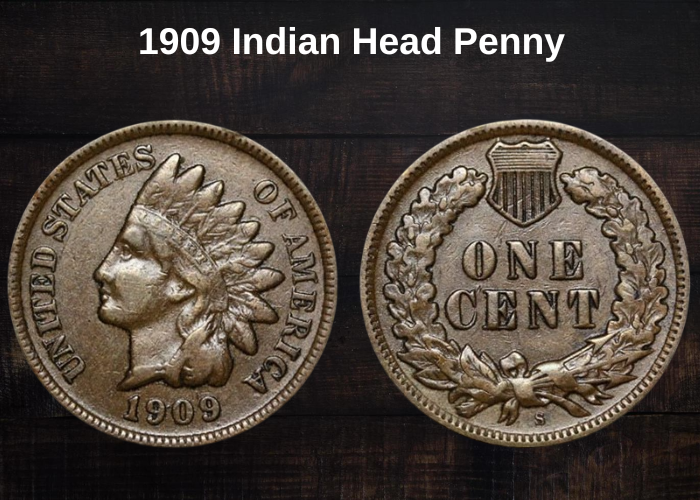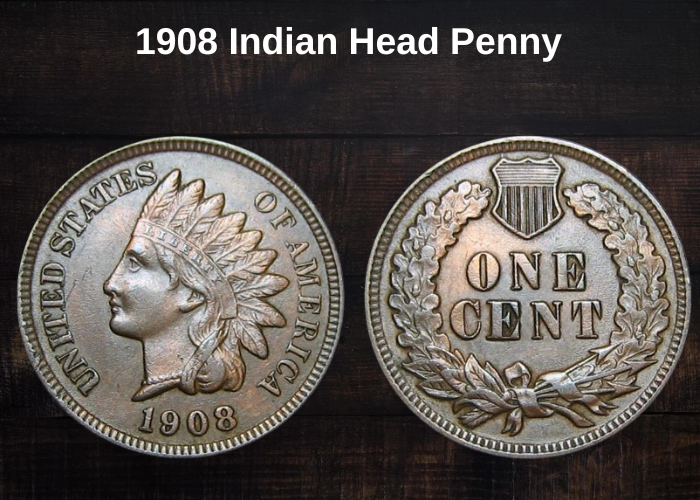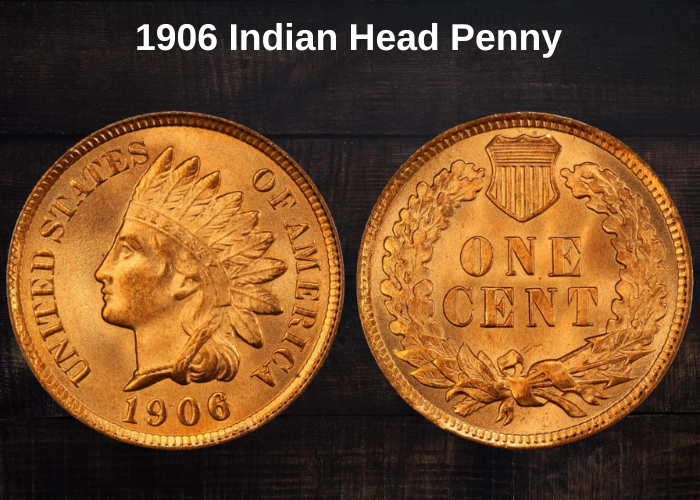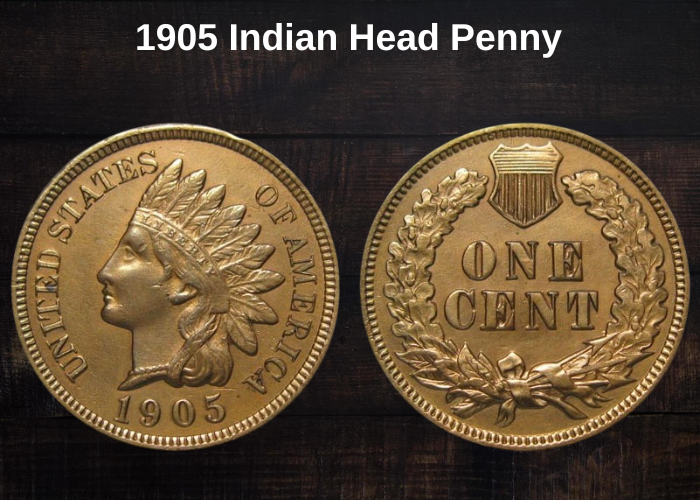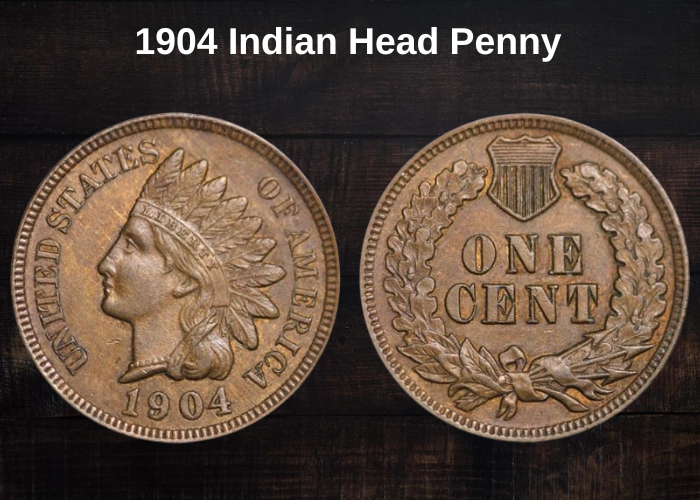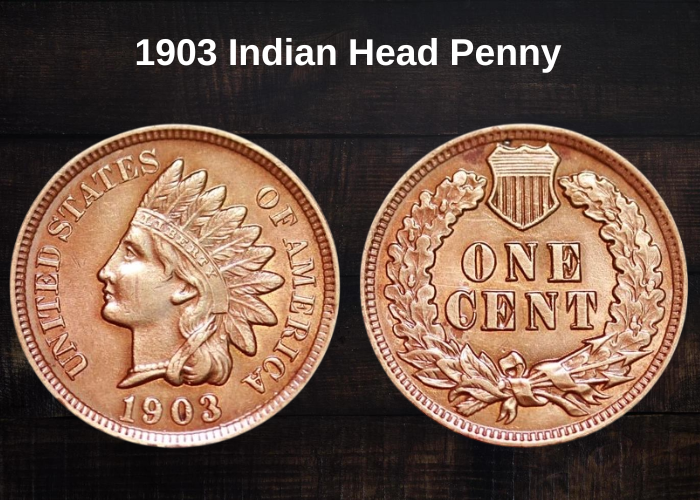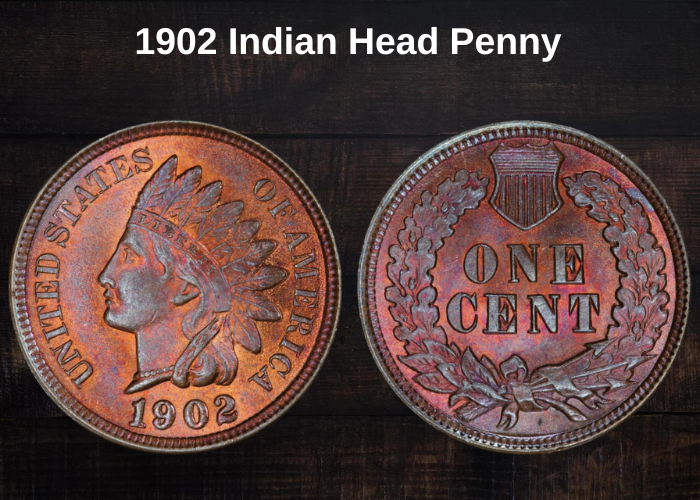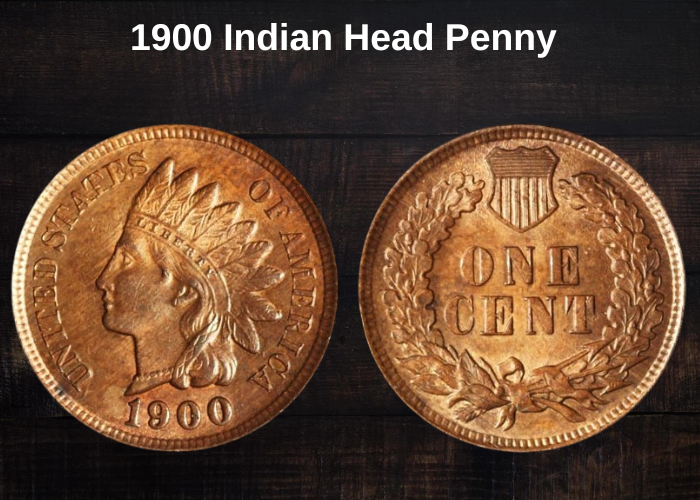The 1898 Indian Head Penny is a coin that falls within the popular Indian Head Penny series, which was produced between 1859 and 1909. While Indian Head Pennies are commonly found, some specific years, like 1898, can still be worth considerable amounts due to their rarity, condition, and potential errors.
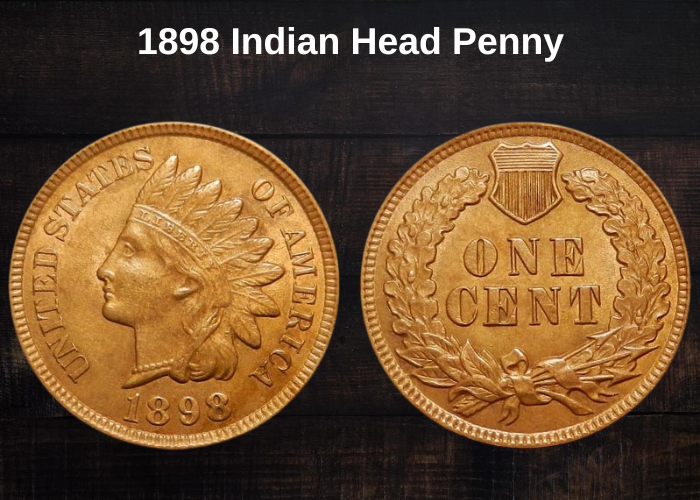
1898 Indian Head Penny Value Chart
| Coin Grade | MS/PR62 | MS/PR63 | MS65/PR66 | MS67/PR68 |
|---|---|---|---|---|
| 1898 No Mint Mark Indian Head Penny | $60 | $70 | $200 | – |
| 1898 No Mint Mark Proof Indian Head Penny | $220 | $285 | $1,150 | – |
- Price Standard Reference Currency: Brown Version.
- No Mint Mark: Most of the 1898 Indian Head Pennies do not have a mint mark, as they were minted in Philadelphia.
These coins’ values are directly tied to their grading, with higher grades (MS65 and above) being worth significantly more. Proof coins, which were struck for collectors and not meant for circulation, are generally worth much higher amounts than regular circulation coins.
1898 Indian Head Penny Grading
Coin grading might seem complicated, but it follows a straightforward system. Coins are graded on a scale from 1 to 70, with 70 being a coin in perfect condition. The two main prefixes you’ll encounter are:
- MS (Mint State): These coins were made for circulation.
- PR (Proof): These coins were specifically struck for collectors and were never meant to circulate.
Color Notations
For Indian Head Pennies, the color grading can also be indicated as follows:
- RD (Red): Coins with this color grade are the most valuable, as they show little wear and have a vibrant red color.
- RB (Red-Brown): These coins have some wear but retain a fair amount of red color.
- BN (Brown): Coins with this color are the most common and are often in lower grades.
Grading Scale:
| Grade | Description |
|---|---|
| 1 | Basal State-1 (Poor Condition) |
| 2–3 | Fair to Very Fair |
| 4–6 | Good (Noticeable wear) |
| 7–10 | Very Good (Moderate wear) |
| 12–15 | Fine (Light wear) |
| 20–30 | Very Fine (Light wear, details still clear) |
| 40 | Extremely Fine (Small wear on high points) |
| 50 | About Uncirculated (Minimal wear) |
| 60–65 | Mint State (Well-preserved with little wear) |
| 70 | Mint State (Perfect, no visible wear) |
The higher the grade, the more valuable the coin, with higher-grade MS or PR coins, especially RD (Red), fetching much higher prices. To determine your coin’s exact value, you’ll need to know its grade, which is key for accurate pricing.
1898 Indian Head Penny Value By Mink Mark
Unlike modern coins, which are minted in multiple locations across the United States, the 1898 Indian Head Penny was only produced at the Philadelphia Mint, the first-ever mint established in the country. This mint was responsible for producing nearly all U.S. coins at the time, including the one-cent pieces.
At that time, coins struck by the Philadelphia Mint did not have a mint mark, unlike those from mints like Denver, which uses a “D” mint mark. It wasn’t until 1980 that Philadelphia began adding a mint mark to its coins. So, when you find an 1898 Indian Head Penny, you won’t see a mint mark, as it was struck exclusively in Philadelphia.
There are two main varieties of the 1898 Indian Head Penny:
- Business Strikes: These coins were meant for circulation and were produced in large quantities.
- Proof Coins: These were made specifically for collectors and were never intended to be used as currency. Proof coins typically have a much finer finish and sharper details compared to business strikes.
While both types are valuable to collectors, proof coins tend to be rarer and more highly valued, especially in higher grades.
1898 No Mint Mark Indian Head Penny Value
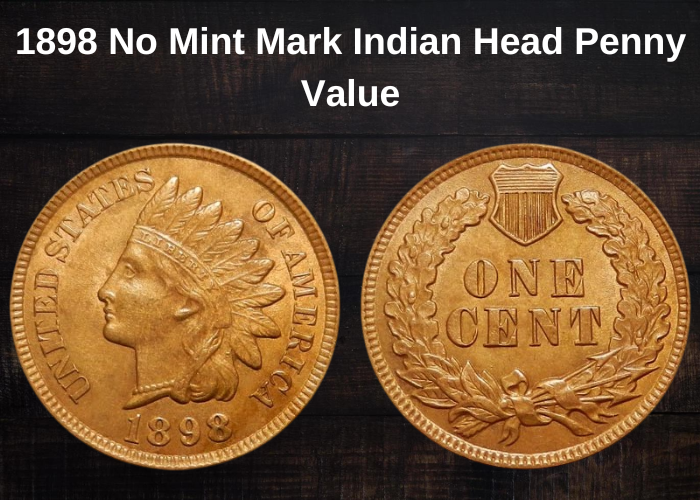
The value of an 1898 No Mint Mark Indian Head Penny is primarily determined by its grade. If you’re unfamiliar with how coins are graded, here’s a quick overview to guide you.
If the coin is worn and in poor condition, it may not be worth much—perhaps just a dollar or so. Despite being over 100 years old, 49,821,284 of these coins were produced, meaning they are still relatively easy to find in worn states.
Grading and Value:
- Good condition: If the coin has visible but faint details, it’s usually worth around $2.
- Very Fine (Grade 20): In this condition, the coin could fetch about $5.
- Almost Uncirculated (Grade 50): A coin in this condition can be valued at $20.
- MS65 or higher: If your coin is graded MS65, expect it to be worth several hundred dollars, with many coins selling for over $200.
Color and Its Impact on Value:
The color of the coin also plays a significant role in its value. Coins are categorized as:
- Brown: These are the least valuable.
- Red/Brown: A step up in value.
- Red: The most valuable and desirable color.
The color does not affect the grade number, meaning a coin graded MS67 can be red or brown, but the red coins will be much more sought after. A red coin can sell for at least four times more than a brown one.
Auction Record:
The highest price paid for an 1898 Indian Head Penny was $26,450 in 2011, but if a similar coin were to sell today, it could likely go for an even higher amount.
In summary, the 1898 Indian Head Penny’s value varies significantly depending on its condition and color, and high-grade red coins are especially valuable.
1898 No Mint Mark Proof Indian Head Penny Value
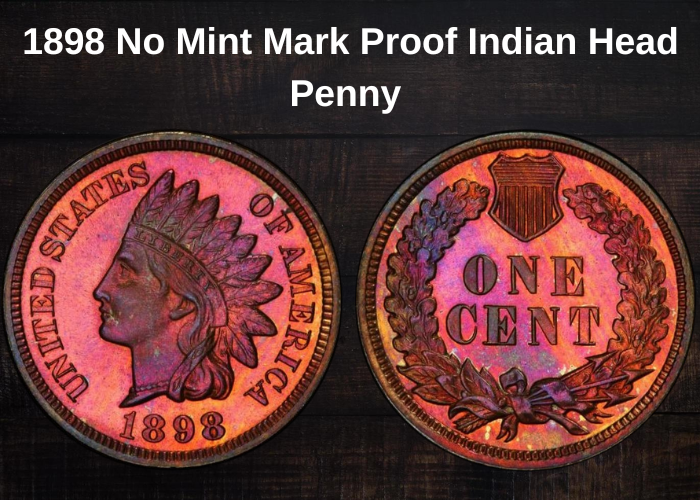
The reason proof coins are produced has evolved over time. Today, proof coins are mainly struck for collectors, with millions made each year. For example, in 2019, around 2 million Lincoln Cent proofs were minted.
In contrast, in 1898, proof coins were not made primarily for collectors but for testing dies and for archiving purposes. As a result, only 1,795 proof coins were struck that year. This makes the 1898 No Mint Mark Proof Indian Head Penny particularly valuable and highly sought after in higher grades.
For example, MS66 proof coins are often valued around $1,150, and some can sell for much higher amounts depending on their condition. Like business-strike coins, the color of the coin significantly impacts its value. A red coin is more desirable than a brown one.
In addition to color, cameo proofs add another level of appeal. A cameo coin is distinguished by a strong contrast between the mirror-like field and the frosted relief (details). This effect was typically only seen on the first few strikes of a coin, making cameo coins rarer than regular proofs.
For instance, a PR66 proof coin with a deep cameo could be worth more than a PR67 without one. The combination of color and cameo can lead to exceptionally high prices. A prime example occurred in 2019, when a PR67 coin with a red color and a deep cameo sold for an astonishing $36,000.
Rare 1898 Indian Head Penny Error List
For collectors interested in error coins, the 1898 Indian Head Penny is a standout year, as it contains six major errors that can significantly boost its value. Here’s a detailed breakdown of these errors:
1 . Repunched Date
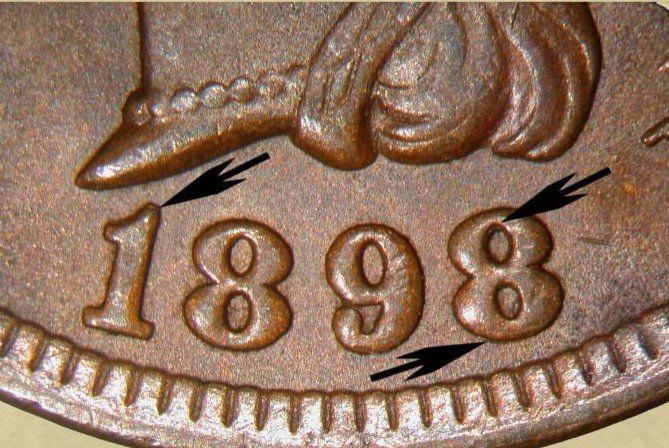
As you might expect from the name, a repunched date refers to an error where the date on the coin is stamped twice. The problem arises when the second strike isn’t perfectly aligned with the first, which can cause the date to appear differently than usual.
In cases where the second strike is only slightly off, the date may look thicker than normal. However, when the misalignment is more pronounced, you might see the dates overlapping each other. This error can make the coin quite valuable, and some high-grade examples have been known to sell for over $1,500.
2. Capped Die
Another intriguing error is the capped die. After a coin is struck by a die, it should be ejected so that a new planchet (blank disc) can take its place. However, in the case of a capped die, the struck coin sticks to the die.
This sticking process blocks or “caps” the die, preventing it from properly striking the next coin. As a result, one side of the coin will have full details, while the other side may appear mostly blank. The 1898 capped die error can be worth $500 or more, depending on its condition and rarity.
3. Triple Struck Error
Some 1898 Indian Head Pennies were not only triple struck, but the coin also rotated in the collar that holds it in place. This results in a slightly doubled appearance on the coin, and it can also cause misalignment between the obverse (head side) and the reverse side.
Typically, the obverse and reverse of a coin are aligned in the same orientation. However, when this error occurs, the two sides may not be properly lined up. The value of these coins varies depending on their condition, but they generally range between $100 and $600.
4. Double Struck Error
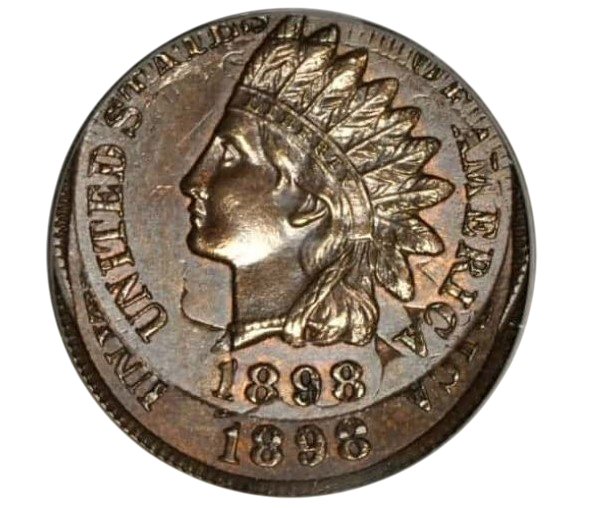
You might assume that a double strike error wouldn’t be as valuable as a triple strike error, but often, they can be just as valuable, if not more. This is because many of these coins were supposed to be ejected but were struck again, causing them to be off-center.
The value of these coins depends on how much the strike was off-center. For instance, a coin that is only slightly off-center may be worth around $150, but one that is significantly off-center could fetch over $1,500. As with most error coins, the more pronounced the error, the more valuable the coin becomes.
5. Struck Off-Center

With a single off-center strike error, the coin was only struck once, but the design is misaligned. This means you’ll still have just one image on the coin, but it’s not positioned correctly. As with the double strike error, the value depends on how much the coin is off-center.
Coins that are significantly off-center can be worth $1,500 or more. However, even though these are error coins, the coin’s grade still plays a significant role. An error coin in mint condition will always fetch a higher price than one that is well-worn.
6. Partial Collar
This error occurs when a coin is struck with an issue related to the collar, which is supposed to keep the blank coin in place and prevent it from expanding. If the collar malfunctions or the blank coin isn’t seated properly, one side of the coin can end up flattened, pushed out, or have missing details.
This type of error, known as a mangled edge or broadstrike, is one of the most common coin errors. Because it’s more frequent, the value tends to be lower compared to rarer errors. Sales of $50 are typical for coins with this error, although it can vary depending on the coin’s grade and specific characteristics.
Where to Sell Your 1898 Indian Head Penny:
If you’re looking to sell your 1898 Indian Head Penny, there are several online platforms where you can easily appraise and sell your coins:
- eBay: A popular platform for selling rare coins, but keep in mind the seller fees.
- Heritage Auctions: A reputable auction site where high-value coins are regularly sold.
- Coin Dealers: Websites like CoinTrackers and GovMint provide a marketplace for selling your coins directly to professional dealers.
Before selling, ensure you have an accurate understanding of the coin’s value by consulting reputable grading services or coin experts.
Here are some answers to common questions about the 1898 Indian Head Penny:
1. What is a 1898 Indian Head penny worth?
The value of an 1898 Indian Head Penny largely depends on its condition. While coins in poor condition may only be worth a few dollars, higher-grade coins can fetch significantly more. Given that over 49 million coins were minted, most are easily found in lower grades. However, in higher grades, they can be worth thousands, with some auction prices reaching $36,000 for an excellent specimen.
2. What years are the most valuable Indian Head penny?
The 1909 S Indian Head Penny is one of the most valuable due to its rarity, with only about 300,000 being minted. This makes it incredibly hard to find, and it sold for $97,750 in 2006. However, any year could be valuable depending on its rarity, condition, and error.
3. What Indian Head Pennies are rare?
Three main factors determine the rarity and value of an Indian Head Penny:
- High grade: Coins with higher grading levels (such as MS67 or MS68) are rarer and more valuable.
- Red color: These coins are the most desirable and the least common, which increases their value.
- Error coins: Coins with minting errors, especially those in excellent condition, are very rare and highly prized among collectors.

